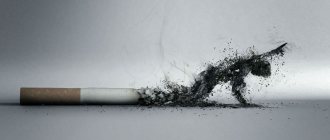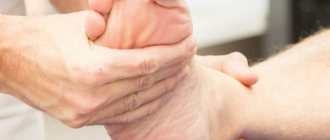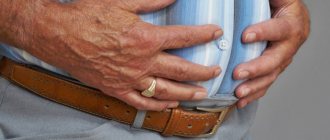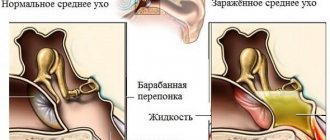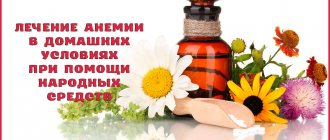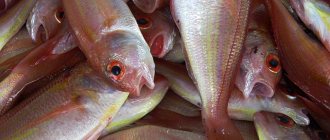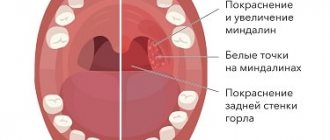Pleurisy is an inflammatory process in the lungs, as a result of which in a sick person there is a large accumulation of exudate between the layers of the pleura or the release of fibrin on the surface of the pleural membranes. This pathology is most often a complication of other serious diseases, such as pneumonia, tuberculosis, cancer, systemic lupus erythematosus, etc. Doctors are not always able to accurately determine the cause of pleurisy, but today in medicine there are three main etiological factors: viral , bacterial and allergic.
Treatment tactics are usually developed after microbiological examination of pleural fluid for infection. Pleurisy of streptococcal, pneumococcal, chlamydial, legionellosis, and mycoplasma etiology is treated with antibiotics, which are selected individually in each case, taking into account the characteristics of the pathogenic flora.
Causes and symptoms of pleurisy
Doctors consider pleurisy as a secondary inflammatory process, which develops as a complication after more severe pathologies.
Often these are viral or bacterial infections that develop in the respiratory system. These include tuberculosis and pneumonia.
Diseases such as pancreatitis and rheumatism are quite often accompanied by the development of pleurisy. Less commonly, pathology develops after chest trauma and after surgery.
It is worth paying attention to your health, carefully treating diseases of the respiratory system in order to wonder how pulmonary pleurisy occurs, what it is, and how to treat the pathology.
The development of pleurisy is indicated by such unpleasant symptoms as:
- dry exhausting cough;
- pain when breathing, for example, when taking a deep breath and if a person lies on his side;
- shallow breathing, which is gentle and rapid;
- the sick side takes less part in breathing;
- long-term low-grade fever;
- malaise, weakness, sweating, fatigue;
- painful hiccups and sharp pain during swallowing.
If you have these symptoms, you should immediately contact a specialist who, after an examination, will make an accurate diagnosis and decide how to treat pleurisy at home.
For all forms of pleurisy, medications are prescribed, as well as traditional medicine methods and certain physiological measures.
Pleurisy. What to do if breathing hurts
Diagnosis of pathology
X-ray of the lungs is one of the methods for diagnosing encysted pleurisy.
Enclosure is determined on x-ray images. They appear as white isolated shadows, separated from each other. To make an accurate diagnosis, radiography is used in three projections: lateral, direct and oblique. Complicated cases require complex diagnostics, which include:
- Ultrasound - shows the amount of exudate, its location and the nature of the adhesive process.
- CT scan of the lungs – displays the condition of the parenchymal tissue and blood vessels, shows the presence of encystations in two projections.
To identify the etiology of the disease, a pleural puncture is performed, which helps to assess the volume of accumulated exudate and its microbiological composition. In some cases, they resort to pleural biopsy when there is a suspicion of connective tissue degeneration.
Since encysted pleurisy provokes disruption of the bronchi, additional diagnostics will be required to evaluate possible concomitant pathologies. Angiopulmonography and bronchography are used to obtain a detailed answer.
The clinical manifestations of encysted pleurisy are similar to the symptoms of other diseases, and the result of radiography alone is not enough. Differential diagnosis is important, excluding the possibility of developing similar diseases.
Basic rules of treatment
During the acute period, patients with pleurisy are prescribed bed rest and nursing care to make rehabilitation faster.
To reduce pain, the doctor prescribes procedures such as mustard plasters, cupping and various compresses, accompanied by tight bandaging.
As for drugs, the following categories of tablets and injections are mandatory:
- Medicines that soothe cough and pain.
- Anti-inflammatory drugs.
- Desensitizing agents.
Along with modern medicines, therapy with folk remedies is mandatory.
After the acute pain goes away and the temperature decreases, the patient is prescribed various physiotherapeutic procedures - massage, rubbing and breathing exercises.
Regardless of the chosen form of therapeutic therapy, special importance is given to hygiene, since it is not entirely known whether pulmonary pleurisy is contagious to others, and to a nutritious diet.
Another important point is the fact that all forms of treatment must be developed and prescribed by experienced doctors. The patient is simply required to strictly follow the instructions .
As for traditional methods and treatment at home, here you can rely on what is at hand and on the absence of individual intolerance.
Symptoms of the disease
Clinical manifestations of the disease may vary and depend on the form and severity of pleurisy, as well as the amount of accumulated exudate. Enclosed interlobar pleurisy is asymptomatic for a long time. The remaining forms are characterized by the following manifestations:
- discomfort when swallowing,
- pain in the sternum, aggravated by movement and physical activity,
- cough for no reason
- radiating pain to the back, shoulder blade, spine, solar plexus area,
- hoarseness, nasopharyngeal congestion,
- swelling of the face, swelling of the neck veins,
- severe shortness of breath that develops at rest,
- spastic, sharp, stabbing pain in the stomach area,
- rapid breathing and heart rate,
- inability to sleep on your back.
Enclosed pleurisy of the lungs can provoke clinical manifestations of an acute abdomen, when a person is not able to explain where exactly it hurts.
Internal products
A fairly quick positive result can be achieved by simultaneously treating pleurisy with modern medicine and home remedies.
Here are the simplest and most effective of them:
- fresh onion juice must be mixed with regular honey in a one to one ratio . Take a tablespoon of the mixture a couple of times a day after lunch and after dinner. This is a unique anti-infective agent;
- honey in a one to one ratio can be mixed with freshly squeezed radish juice . The composition is taken in a spoon three times a day;
- cherry pulp and juice should be taken a quarter glass three times a day and preferably after meals;
- After removing the acute symptoms of the disease, you can prepare your own medicinal pills . To prepare it, you need to take butter and honey in equal volumes, and you can add some nettle and almond seeds to them. All this is mixed and small balls are made from the resulting composition. After the tablets have cooled, they need to be dissolved one at a time three times a day.
Traditional medicine is unthinkable without herbal treatment. To treat pleurisy, you can use special preparations and herbal infusions. Among the most popular and effective are:
- Take two parts each of anise, licorice root, marshmallow, sage and pine buds . A spoonful of the resulting mixture is brewed in a glass of boiling water, tightly closed and infused for 5 hours. After straining, the infusion is drunk by spoon approximately 4-5 times a day.
- You can take part of the roots of elecampane, peppermint, licorice and dried herb, as well as 2 parts of coltsfoot leaves . Based on these herbs, you need to prepare a solution - a spoonful of the mixture in a glass of boiling water. Take an infusion of half a glass of herbal decoction three times a day.
- To effectively treat exudative pleurisy, you will need to take a glass of fresh aloe juice, a glass of homemade linden honey, a glass of vegetable oil, 150 grams of birch buds, 50 grams of linden flowers . Preparing the medicinal mixture is quite simple - pour birch and linden buds with a couple of glasses of boiling water, cook in a water bath for 15 minutes and then infuse everything for half an hour. After filtering, aloe juice and honey are added to the composition. After heating for a short time, you can add just a little vegetable oil to the resulting mixture. This is a very effective composition that should be taken 1-2 spoons three times a day, depending on how long the temperature lasts. Eating doesn't really matter here.
- A tablespoon of horsetail is poured into half a liter of boiling water and infused for three hours. You need to take half a glass 4 times a day.
If you use these traditional medicines systematically, if you follow the doctor’s recommendations, you can quickly restore the body in the elderly and in children, and completely get rid of a disease such as pleurisy.
As soon as the acute form of the pathology goes away, simultaneously with internal means of treatment, it is worth introducing procedures associated with external manipulations.
How to treat pleurisy at home
Greetings, dear readers of the blog Narmedblog.ru. Autumn has come to us, winter is coming soon. The cold season contributes to the occurrence of widespread colds, ranging from a common runny nose to dangerous flu and pneumonia.
The topic of today's article is the treatment of pleurisy using traditional methods.
Causes of pleurisy and its symptoms
● Our lungs are covered on all sides with a special membrane called pleura. This shell protects them: they slide freely along the chest when breathing.
During inflammatory processes, the pleura thickens and swells, becoming uneven - thus pleurisy occurs.
● Pleurisy itself, as a rule, is recorded very rarely: with massive hypothermia or trauma in the chest area. In most cases, pleurisy is a companion to some other pulmonary disease: tuberculosis, pneumonia, bronchitis.
Somewhat less frequently, it develops as a complication of diseases of the abdominal organs: pancreatitis or hepatitis.
● In medicine, two types of pleurisy are distinguished: dry and effusion (or exudative) - with the release of fluid into the pleural cavity.
● With dry pleurisy, there is no fluid in the pleural cavity; the pleural layers rub against each other when breathing, causing acute pain in the chest, especially when coughing.
You can often hear from a patient with pleurisy: “My chest hurts so much, it’s as if someone was stabbing with an awl.” He has to take a forced position in order to calm the pain at least a little: he lies on the healthy side of the chest or leans against some object.
● With dry pleurisy, body temperature rises, often reaching 38-38.5 degrees. Appetite decreases, the patient loses weight.
● When fluid accumulates in the pleural cavity, the volume of which can reach up to five liters, the pain subsides, a wet cough appears instead of a dry one, and noticeable shortness of breath begins.
Breathing is bubbling - heard at a distance, it is superficial, irregular, and often whistling. This condition is accompanied by weakness, chills and profuse sweat.
How to differentiate pleurisy from other pulmonary diseases
● To make a diagnosis, clinical observations alone are not enough - the results of laboratory blood tests and x-ray examination of the chest organs are needed.
The presence of a serious inflammatory process in the body is indicated by anemia (anemia), leukocytosis (increased number of white blood cells), an increase in ESR (erythrocyte sedimentation rate) to 70-80 units.
● A fairly reliable method for diagnosing pleurisy is chest X-ray, but it has the following disadvantage: it can detect darkening in the pleural cavity only when the volume of pleural fluid in the pleural cavity is at least 300-500 ml. That is, an x-ray will not show the presence of dry pleurisy.
● There is another way to clarify the diagnosis - puncture of the pleural cavity. Using this method, the doctor sends pleural fluid for laboratory testing and subsequently determines both the degree of the inflammatory process and the cause of the disease based on its quantity, color, consistency, and the presence of microbial flora.
“Attention: only a certified doctor can establish an accurate diagnosis and prescribe treatment for you, so I strongly recommend that you agree with your doctor on all the recommendations given below.”
Treatment of pleurisy - the first stage
● Do not delay the illness, contact your local doctor. Self-medication can cause a compressed lung to stop functioning completely. Treatment of pleurisy should be comprehensive.
First of all, you need to stop the main process that led to the occurrence of pleurisy.
● Subsequently, antibiotics and anti-inflammatory drugs are prescribed. Among the antibiotics, the most effective are clindamycin, fortum, cefobid, and cefatoxime.
The course of treatment lasts 2-3 weeks, after which, if necessary, you can replace antibiotics with sumamed, augmentin, amoxilav.
● Depending on the severity of the disease, treatment of pleurisy lasts up to two months, and is strictly individual for each patient. Along with antibiotics, the doctor prescribes non-steroidal anti-inflammatory drugs: voltaren or ibuprofen ; in especially severe cases, people with weakened immune systems are prescribed a hormonal medicine - prednisolone .
● In case of dry pleurisy, if there is no high temperature (fever), the patient is prescribed distractive medications: alcohol warming wraps (compresses), mustard plasters, cups on the chest area.
Treatment of pleurisy with traditional methods
● Many medicinal herbal mixtures effectively affect the inflammatory process in the lungs, but in the treatment of pleurisy they are prescribed in combination with pharmaceutical drugs, and during the period of convalescence (recovery).
For diseases of the upper respiratory tract, licorice root, white willow bark, fennel fruits, linden blossom, plantain grass, hyssop, knotweed, and coltsfoot leaves have proven themselves to be effective as an expectorant and anti-inflammatory agent.
● Recipe No. 1 . Pour two tablespoons of chopped fennel fruits with a glass of boiling water and place in a water bath for 15-20 minutes. Let it brew for one hour. Take ⅓ glass of decoction three times a day for dry pleurisy.
● Recipe No. 2 – for exudative (effusion) pleurisy. Pour 50 grams of linden blossom and two tablespoons of birch buds into two glasses of boiled water; heat the medicinal mixture in a water bath for 15 minutes and then leave for one hour.
Strain the broth and add one glass of linden honey and aloe juice to it, place again in a water bath for five minutes. Stir and add one glass of vegetable oil (preferably olive).
Take one tablespoon before meals three times a day for one month.
● Recipe No. 3 – for the treatment of dry and exudative pleurisy. Grind and mix equal proportions of coltsfoot leaves, black elderberry flowers and knotweed grass.
Pour one tablespoon of the mixture into 200 ml. boiling water and leave in a thermos for half an hour. Drink ¼ glass of infusion half an hour before meals three or four times a day.
Compresses and rubbing
High-quality treatment of pleurisy in adults consists of taking medications, herbal infusions, and also using compresses and various rubbings. At home, you can easily prepare products for compresses and rubbing.
Here are some of the most famous recipes:
- 300 grams of badger fat , the same amount of crushed aloe leaves mixed with a glass of honey. The resulting mixture should simmer in a low-heat oven for 15 minutes. Only after this the product is ready for use. This product can be used to rub the chest and back. The advantage of this remedy is that it can be taken orally – three times a day before meals.
- For effective rubbing, you can use 30 grams of camphor oil, three grams each of lavender and eucalyptus oil . The result is a fairly liquid composition that can be rubbed into the chest a couple of times a day.
- For medicinal rubbing, you can use plain olive oil . The product must be preheated to the desired temperature using a water bath. The oil is rubbed into the chest area, and the affected area is covered with a mustard compress.
- Clean pine air helps well with pulmonary diseases . If it is not possible to go into the forest every day, you can use high-quality fir essential oils and oils. This product can not only be inhaled, but also rubbed on the lung area.
- An effective composition is carefully mixed 30 grams of camphor oil , 2.5 grams of lavender oil and lavender oil in the same volume. This mixture is rubbed into the sore side two to four times a day, and at night you can make a compress from the oils.
- At the very beginning of the development of the disease, if there is no fever, you can make a compress from plain hot water, preferably sea water .
- To relieve pain, apply a bandage with dry mustard to the sore spot .
- A compress cake with calendula oil is very effective . To prepare it, you need to take 6 tablespoons of flour, 2 tablespoons of mustard, calendula flowers, linden honey and 4 tablespoons of vodka. To prepare a compress, you will need to take 2 tablespoons of calendula oil and add powder from the mixed substances listed above. All this is thoroughly mixed and heated in a water bath for 5 minutes. The mixture should be in the form of a more or less stiff dough, which is placed on gauze and applied to the chest, and covered with a warm scarf or scarf on top. This compress should be kept for about half an hour, and the process itself should be repeated every day for a month.
- , table salt in the amount of 50 grams, the same amount of mustard seeds and approximately 30 ml of purified kerosene are well suited . Everything is thoroughly mixed and rubbed into painful areas.
- Mustard powder in an amount of 30 grams is mixed with 2.5 glasses of water and a teaspoon of honey . Everything is mixed and a terry towel is soaked in the resulting solution. The fabric is then wrung out and applied to the chest. To enhance the effect, you need to lay a woolen scarf on top. This compress lasts 20 minutes, and after the procedure it is recommended to lie under a warm blanket for half an hour.
These are quite effective and efficient methods of treating pleurisy. Quite their effectiveness far exceeds drug treatment and is a unique and effective addition to the main treatment.
The most important thing in this form of treatment is the correct preparation of mixtures and formulations, regularity and absence of fever at the time of the procedure.
Types of pleurisy
This disease can manifest itself in a variety of forms. The course of treatment prescribed by the doctor, as well as certain folk remedies, largely depends on this.
In this regard, you need to imagine a classification of the main categories of pleurisy, divided as follows:
- According to the type of lesion, pleurisy can be dry or fibrous, exudative, that is, effusion or wet, purulent and hemorrhagic. Chylous pleurisy is associated with pathology of the lymphatic vessels. They differ in the different amount of exudate, the presence or absence of pus, the content of lymph or blood in the fluid. Patients experience an increase in temperature, severe pressing pain in the chest, and the skin becomes pale due to high internal blood loss.
- The course of the disease can be acute or chronic. In the first case, shortness of breath appears, general malaise and weakness occur. Coughing or sneezing causes pain in the chest area. In some cases, pus may accumulate in the pleura. Symptoms of chronic pleurisy are not so obvious, but their presence is observed for a long time. Often this complication occurs repeatedly.
- Depending on the location, the pathology can be left-sided, right-sided or bilateral. Most often, fluid and pus accumulate on the left side. This indicates latent tuberculosis and is a harbinger of myocardial infarction and malignant tumors. Inflammation on the left can give rise to a displacement of the cardiac axis. The pleura of the lung on the right side is affected very rarely, and bilateral pleurisy is most often found in tuberculosis. In this case, pain is felt throughout the chest.
- According to its distribution, pleurisy can be diffuse (total) or encysted. In the first case, pus or exudate moves throughout the pleural cavity, and in the second, it accumulates in certain areas and is limited to adhesions.
Massage and breathing exercises
During the period of complete recovery, it is worth using certain physiotherapeutic procedures. This includes a set of physical therapy exercises for pleurisy, massage. Breathing exercises for pleurisy are no less effective.
The advantages of such events include:
- Rapid resorption of infiltrates and removal of accumulated fluid in the pleural area.
- Activation of blood and lymph supply to the lungs.
- Stimulation of chest mobility.
- Prevention of the formation of adhesions.
- Strengthening and activating the body's defenses.
The massage procedure should be entrusted only to an experienced specialist who is well acquainted with the characteristics of the disease and the sequence of the treatment process.
You can only perform a light massage yourself at home using regular cream. The procedure will not improve blood flow and lymph flow in the lungs, but is guaranteed to prevent stagnant processes, which often cause pneumonia.
The sequence of massage actions in this case is as follows:
- kneading paravertebral areas;
- rubbing the latissimus dorsi muscles;
- stroking and kneading the supra- and infraclavicular areas;
- massage of the diaphragm and chest area.
At the end of the massage procedure, it is worth doing simple breathing exercises. The general course of massage treatment lasts 12-15 times for 20 minutes. It can be done either every day or every other day.
Inflating balloons can be used as an effective breathing exercise . At first, the process is difficult, the patient may experience pain, but little by little the event will become easier and easier, and recovery will accelerate significantly.
Classification
In clinical medicine, it is customary to divide effusion using several classifications. Each classification identifies certain characteristics of the patient’s condition and allows one to select the most effective methods for treating encysted pleurisy after diagnosis.
Due to the appearance
Classification by etiology or cause of appearance:
- Infectious pleurisy. They include derivatives from the names of viral, fungal or bacterial pathologies - tuberculosis (provoked by Koch's bacillus), syphilitic (provoked by treponema pallidum), staphylococcal, pneumococcal, parapneumonic and others.
- Aseptic pleurisy. They include derivatives from the names of non-infectious pathologies - tumor (malignant neoplasms in the lungs), pancreatic, rheumatic, post-traumatic and others.
- Idiopathic pleurisy (pathology with an unknown cause).
Determining the cause of the disease is the first step in diagnosis. During a consultation with a doctor, a specialist asks the patient about his condition and identifies factors that influenced the development of the disease. Without determining the cause of the pathology, treatment may be ineffective or last much longer.
By location
Classification according to the location of encysted pleurisy:
- Apical or “apical” is a form of effusion located in the upper region of the lung.
- Paracostal or “parietal” is a form in which the wide part of the encysted pleurisy is adjacent to the surface of the ribs.
- Basal or “diaphragmatic” is a form in which the wide base of the encysted pleurisy is adjacent to the diaphragm. This category includes several subsections - diaphragmatic-interlobar, diaphragmatic-paracostal and diaphragmatic-paramediastinal encystation.
- Interlobar or “interlobar” is a form in which there is an accumulation of effusion in the area of interlobar fissures.
- Paramediastinal - a form in which the effusion is adjacent to the surface of the mediastinal pleura.
You can also find a division of effusion into partial or complete. If with partial encysted pleurisy there is a restriction of movement on one or both sides, then in the second case there is complete fixation of the fluid.
The nature
By nature, encysted pleurisy is divided depending on the accumulations that form it:
- Fibrinous.
- Serous.
- Serous-fibrinous.
- Purulent.
- Putrefactive.
- Hemorrhagic.
- Eosinophilic.
- Cholesterol.
- Frail.
The nature of the effusion is directly related to the cause of the disease.
In addition, it is worth noting that encysted pleurisy occurs both as a single effusion and in the form of multiple fluid accumulations.
Treatment of pleurisy during pregnancy
Pleurisy is one of those diseases whose occurrence during pregnancy is easier to prevent than to treat. If the expectant mother is at risk, it is necessary to act proactively and treat the underlying disease, strengthen the immune system, and protect your body from negative influences.
If it was not possible to avoid the disease, then treatment must be carried out under the supervision of a specialized specialist who is aware of the situation of his patient. Therapy in this case will be aimed at alleviating the patient’s condition and eliminating the inflammatory process. The drugs of choice will be herbal ingredients and gentle synthetic drugs (possibly topical antibiotics). Self-medication and spontaneous dosage changes are inappropriate.
Efficacy of antibiotic therapy and side effects
The basis of drug treatment for pleurisy is antibacterial therapy, which, as a rule, shows good results only in combination with other methods of treating this disease. So, if the patient does not engage in a specially developed exercise therapy complex for patients with pleurisy, there is a risk of numerous adhesions and, as a consequence, acute pulmonary failure. Overgrowth of the lung with fibrous tissue can also cause limited mobility, including loss of ability to work.
In addition, long-term treatment with antibiotics has an extremely negative effect on the condition of many organs, as well as the cardiovascular and digestive systems. As a result of this, having recovered from bacterial pleurisy, the patient must undergo a full rehabilitation course, which includes the following types of therapies:
- Detoxification. During their life, bacteria release many toxins, which are actually poison for the human body. After treatment with antibiotics, dead microorganisms decompose, forming purulent foci in previously affected areas, which leads to general intoxication and other unpleasant consequences. The main methods of combating this condition are the use of diuretics and blood washing through intravenous infusion of water-salt solutions.
- Immunostimulating. The immune system is responsible for the body’s resistance to various infections, but the presence of inflammatory processes indicates that it is in a critical condition. During the treatment of pleurisy, as well as during the rehabilitation period, it is advisable for each patient to take a course of vitamins, as well as drugs that restore the natural intestinal microflora. Natural products containing large amounts of vitamin C (decoctions and infusions based on rosehip, currant, dogwood, cranberry, rowan) or immunomodulatory agents such as Imudon, Timogen, IRS-19 can act as immunostimulating agents.

